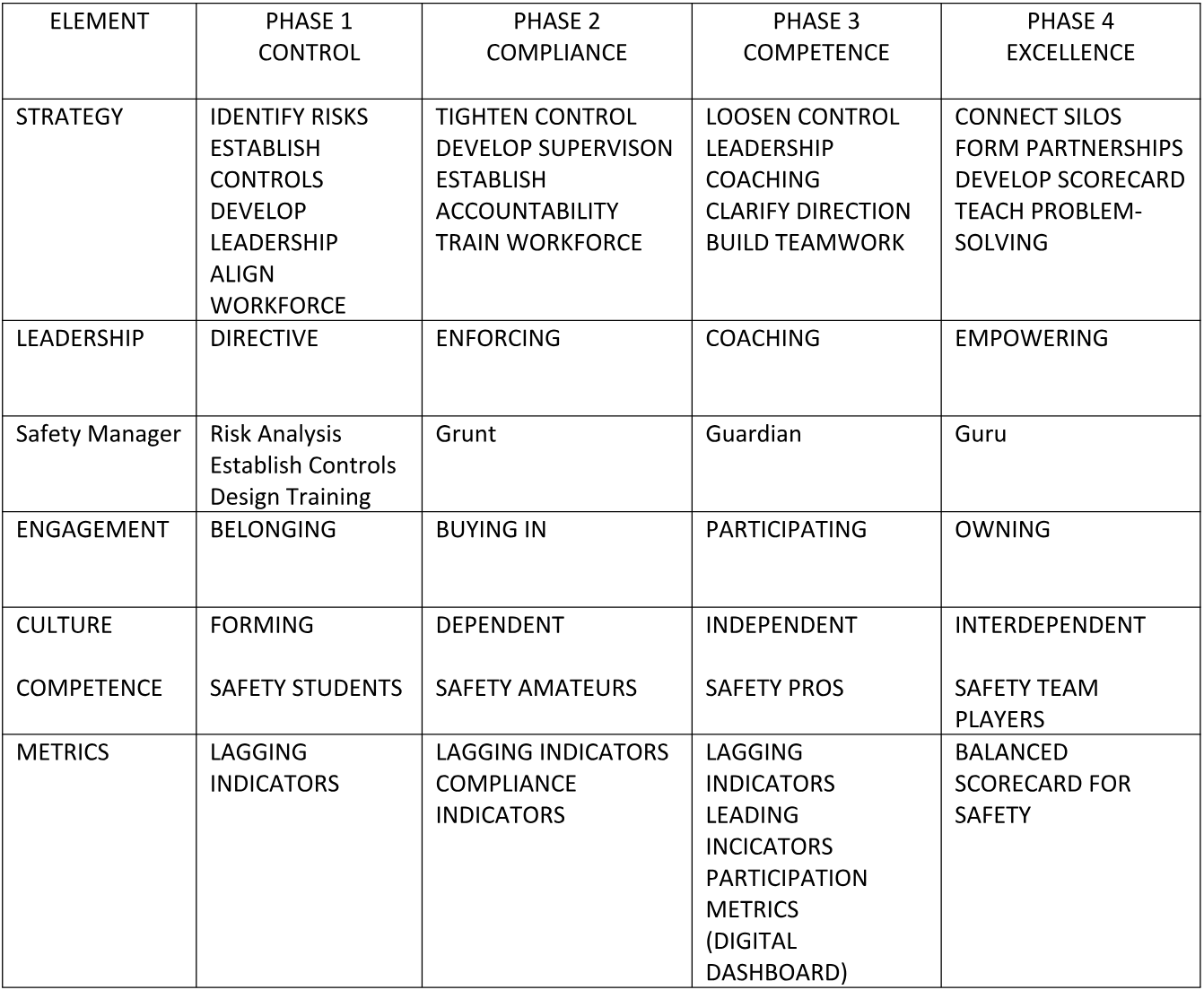Safety + Health Magazine - June 2019
By: Terry L. Mathis
Printable Version
It has been my honor to present at the NSC Congress for many years now. Last year, as I considered what my clients most often requested, I chose to speak about safety culture. It seemed like a lot of folks were getting clearer pictures of what their culture was and what they wanted it to be, but none of them had a strategic plan of how to make the transition. While they knew the general direction they wanted to go, they had no roadmap to guide them there. Many referred to the Dupont Bradley CurveTM as though seeing the three-step transition could somehow magically make it happen.
I have found that strategies always need to be customized to the organization, although this model was extracted from many to form generic steps. The goal is to provide a guideline for what must be addressed in the organization to impact the desired culture transition. While each individual plan should be different, this model is a checklist to ensure you formulate a complete approach.
Each element of safety excellence impacts and influences the safety culture. This means if the influencers don't change, neither will the culture. Each element must evolve through the stages from left to right. If any of the elements doesn't progress at a similar rate as the others, the process will stall or, at least be sub-optimized. If strategy, leadership and engagement don't evolve, neither will culture. If metrics are not developed to measure the progression, it will be impossible to manage the change.
Once an organization has the big picture of what culture improvement entails, then the implementation of the steps can be planned and executed. Failure to fully appreciate and address these necessary steps usually results in wishful thinking rather than meaningful progress. Having a visual representation of the necessary steps also facilitates leaders in grasping what is necessary and mentally mapping it toward completion.
Begin at the left of the model and trace each element in the first column from left to right. This is what must happen to achieve safety excellence while shaping a safety culture that will sustain the improvements.

Safety Excellence Maturity ModelSM
Terry Mathis, Founder and CEO of ProAct Safety, has served as a consultant and advisor for top organizations the world over. A respected strategist and thought leader in the industry, Terry has authored five books, numerous articles and blogs, and is known for his dynamic and engaging presentations. EHS Today has named him one of the '50 People Who Most Influenced EHS' four consecutive times. Terry is a regular speaker at NSC and a frequent keynote speaker at regional and industry conferences Terry can be reached at info@proactsafety.com or 800-395-1347.

Terry Mathis, Founder and retired CEO of ProAct Safety, has served as a consultant and advisor for top organizations the world over. A respected strategist and thought leader in the industry, Terry has authored five books, numerous articles and blogs, and is known for his dynamic and engaging presentations. EHS Today has named him one of the '50 People Who Most Influenced EHS' four consecutive times. Business leaders and safety professionals seek Terry's practical insight and unique ability to introduce new perspectives that lead to real change.
For more information, call +1.936.273.8700 or email info@ProActSafety.com.
